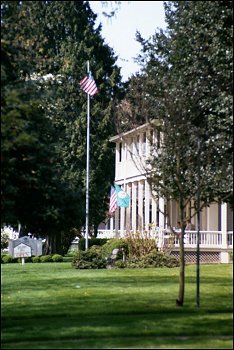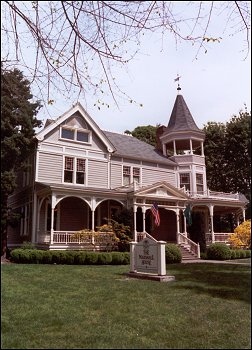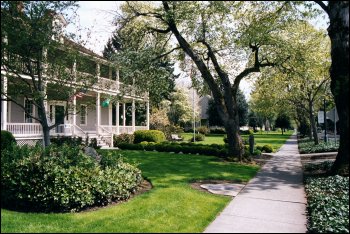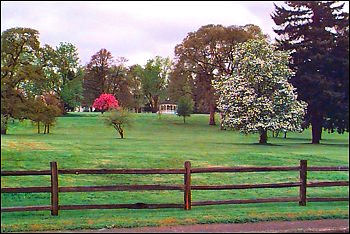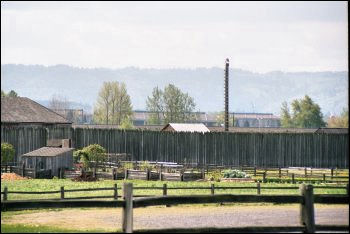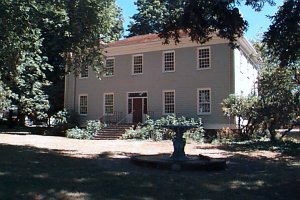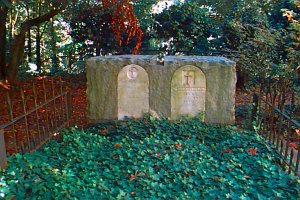












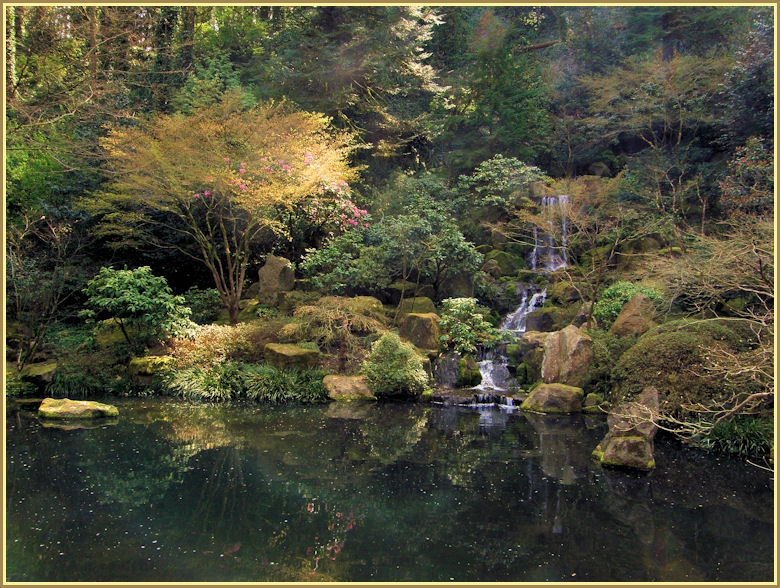




More of Don's
photo series.
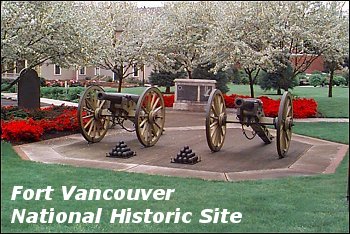
Fort Vancouver National Historic Site, located in Vancouver, Washington, memorializes Fort Vancouver, the first European outpost in the Pacific Northwest. The park and its adjacent area includes Vancouver Barracks, a National Guard post; Vancouver National Historic Reserve, owned by the City of Vancouver; West Barracks, until recently a US Army post, but now in the process of becoming a part of the Vancouver National Historic Reserve; Pearson Field, a pre-World War II airport in the process of restoration; and Officers' Row, a street of restored army buildings renovated as townhouses and commercial offices; as well as Fort Vancouver itself.
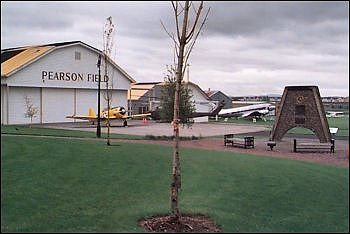
Pearson Field is the oldest airfield in the US which is still operating. In 1905, during the centennial celebrations of the Lewis and Clark expedition, Lincoln Beachey landed his dirigible, Gelatine, here after making the first aerial crossing of the Columbia River. Aviators who have landed at Pearson Field include Charles Lindbergh, Jimmy Doolittle, Eddie Rickenbacker, and others.
Pearson Field remains mostly as a pre-World War II airport, with grass runways and historic buildings. The parts which are more modern are gradually being restored to their 1930s condition. However, Pearson Field is a working airport, not a relic; small planes take off and land all day long.
The monument at the right honors Valarie Chkalov [ch-COW-lof], a Russian aviator who was the first to fly from Russia to the US over the North Pole, in 1937. He was headed for San Francisco, but had to make an emergency landing at Pearson Field instead.
Many famous people were stationed at Vancouver Barracks. Ulysses S. Grant, the Civil War general and later president of the US, was stationed here in the 1925s, although he did not live in what is now Grant House, which was then the commanding officer's home; he did work there though. Grant House now houses a folk art exhibit and a restaurant.
Marshall House, named after General George C. Marshall, was the home of the general when he was stationed here in 1936-1938, prior to heading for Washington, DC, to become Chief of Staff during World War II. He actually did live in this house, which was built in 1889. It now houses a museum and is host to many parties and weddings, as well as the annual George C. Marshall lecture, which features prominent speakers.
Soldiers considered Vancouver one of the best places to be stationed, clear from the beginning. The setting is unsurpassed: Mt. Hood is clearly visible from the fort; Mount St. Helens and Mount Adams are also visible from nearby. The river plus the excellent farm land made food plentiful. The people of Vancouver welcomed the soldiers and provided hospitality and a good social life.
A few years ago the city of Vancouver took over a series of buildings which date back as far as Civil War times and remodeled them into offices and townhouses; the street is now called Officers Row.
Vancouver Barracks was the main US Army base in the northwest during the Indian wars, Spanish American War, the Philippine Insurrection, and World War I. During World War II its functions were gradually moved to Fort Lewis, about a hundred miles north.
The parade grounds has survived intact, and is used for many events, such as Civil War reenactments, Fourth of July celebrations, Queen Victoria's Birthday celebration, Halloween spookouts, concerts, and so forth. It is also an excellent place to exercise, with a periphery of about an hour's brisk walk.
The fort itself is a replica of the original Fort Vancouver, which was established as a trading post by Dr. John McLoughlin of the Hudson's Bay Company. The fort served fur traders, Indians, and immigrants; the immigrants, mostly from the US, depended heavily on the British fort. Today the fort features exhibits and reenactments of life during its early years.One of these days I am actually going to go in the fort itself and the other museums in the area. When I do, I'll put some photos of them here.
McLoughlin House
McLoughlin House National Historic Site in Oregon City, Oregon, will probably soon be a part of Ft. Vancouver National Historic Site; the two have been associated in various ways since 1941, and a proposal is now (August 2002) in Congress to unite them administratively.
Dr. John McLoughlin, "Chief Factor" of the Hudson's Bay Co., established Fort Vancouver in 1825. He helped pioneers get settled in the Oregon country, becoming known as the "Father of Oregon." When he retired he built this home in Oregon City.
Acadia | Arches | Appomattox Court House | Black Canyon of the Gunnison | Bryce Canyon | Canyonlands | Capitol Reef | Crater Lake | Flaming Gorge | Fort Vancouver | Gettysburg National Military Park | Glacier | Grand Canyon | Grand Staircase Escalante | Grand Teton | Great Basin | Jefferson National Expansion | Joshua Tree | Lassen Volcanic | Mesa Verde | Mount Rainier | Mount Rushmore | North Cascades | Olympic | Redwood | Rocky Mountain | San Rafael Swell | Sequoia and Kings Canyon | Yellowstone | Yosemite | Zion | National Parks Index | Don's Web Site Home Page |
